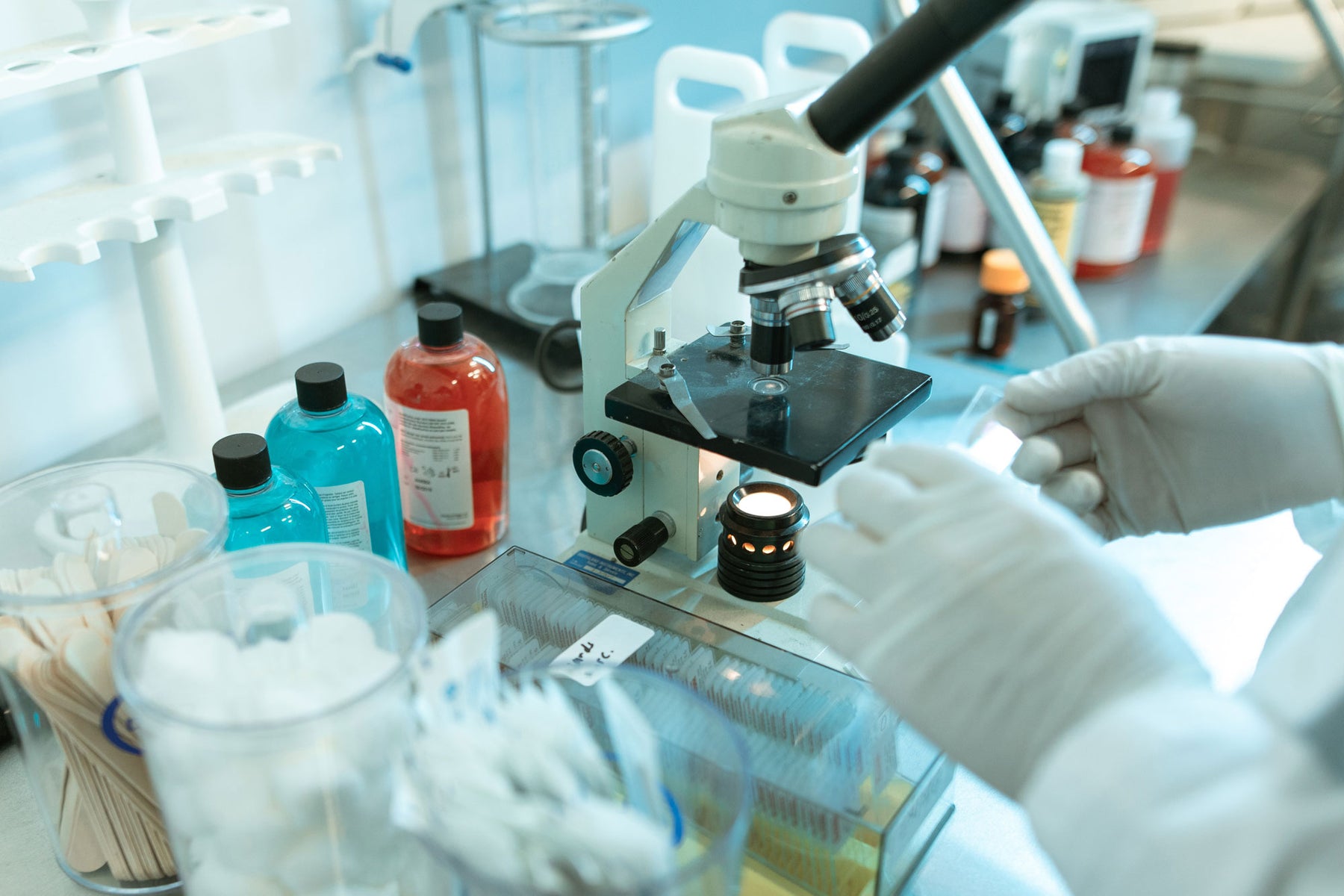
How to use stains to view bacteria under the microscope
Bacteria are hard to see under a normal microscope – not just because of their size – but because they’re largely transparent. This makes it difficult to differentiate the bacteria from their background.
The solution is simple – make your bacteria less transparent!
You can use stains (‘dyes’) to colour your specimens, enhance the contrast and make it much easier to see the bacteria and their internal structures.
Or you can stain the background medium instead of the bacteria itself, letting you get a better look at their shape, size and arrangement against a coloured backdrop.
In addition, you can use stains to differentiate between different bacterial groups based on their properties. The most well-known example of this is the Gram stain, which uses pink and purple colouration to distinguish between species based on the composition of their cell walls.
Stains are cheap, versatile and easy to use. Just remember that many stains kill live specimens, so be sure to check beforehand if you need your specimens alive and swimming.
Staining procedure
Each stain or stain combination is applied in its own way, so it’s important to follow any instructions for the stain you’re trying to use.
You should also heed any safety precautions because many stains are hazardous, and even benign stains can leave you with colourful fingers for much longer than you’d expect.
The staining procedure can be as simple as adding a drop to a sample or a complex multi-step process involving different stains, heat fixing and washing. It all depends on your bacteria and what you’re trying to see.
Applying a stain – an example
Here’s an example of the simple staining process for a common stain – methylene blue.
What you’ll need
- Glass slide
- Coverslip
- Methylene blue
- Bacteria sample
- Paper towel (or similar)
- Water
- Tweezers
Method
- Make a wet mount of your bacterial sample – use the tweezers to place some of your sample on the centre of the slide and add a small drop of water to it. Gently lower a coverslip edge-first into the outer edge of the droplet, before slowly lowering the rest of the coverslip down on the droplet until it is resting flat on the slide.
- Take your methylene blue and add a single drop to the glass slide right against the outer edge of one side of your coverslip
- Get your paper towel and place the edge of it against the opposite side of the coverslip from the stain.
- Watch the stain be pulled through the sample by the water rushing into the absorbent paper towel
- Wait until the sample is completely covered by the stain and remove the paper towel. (You might have to add another drop of methylene blue if some of the sample remains unstained.)
- Place the slide on your microscope and enjoy the new colour and enhanced contrast of your bacterial sample.
